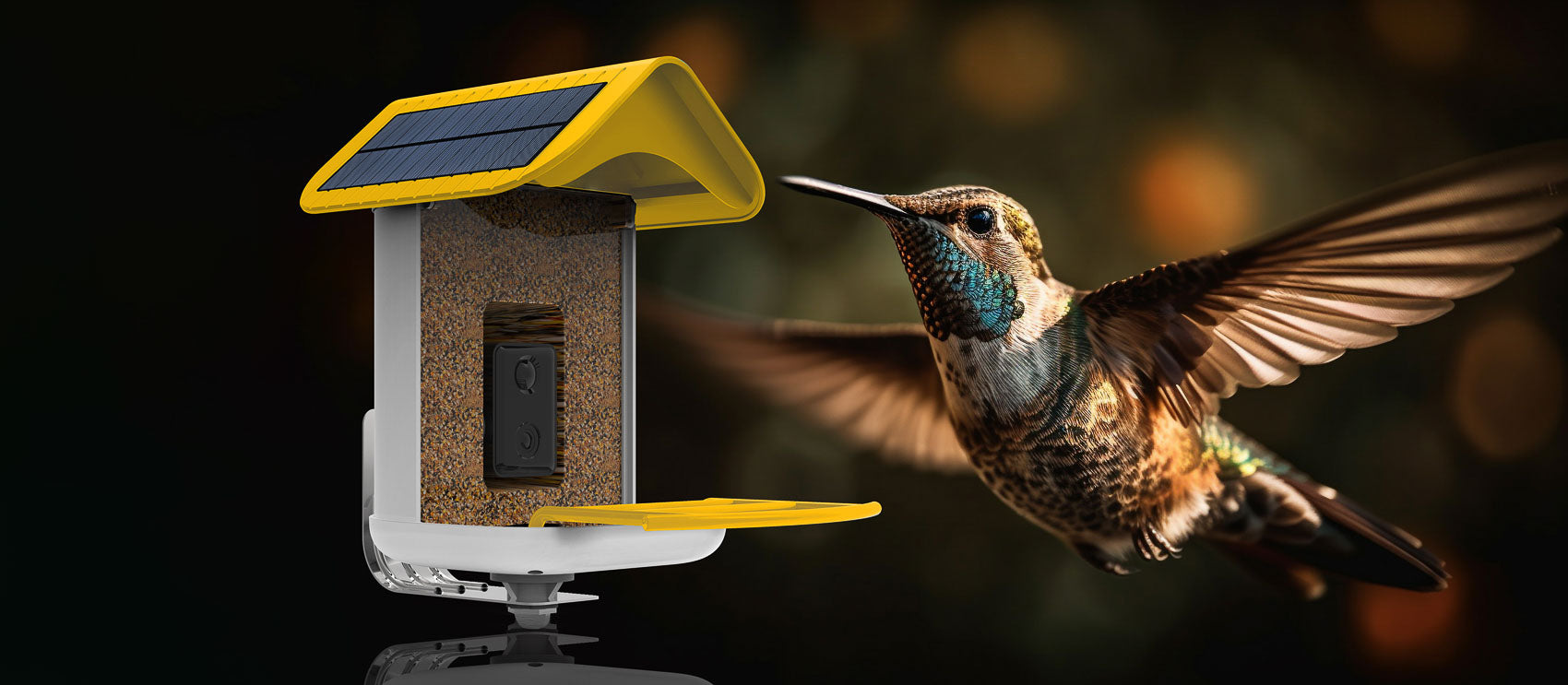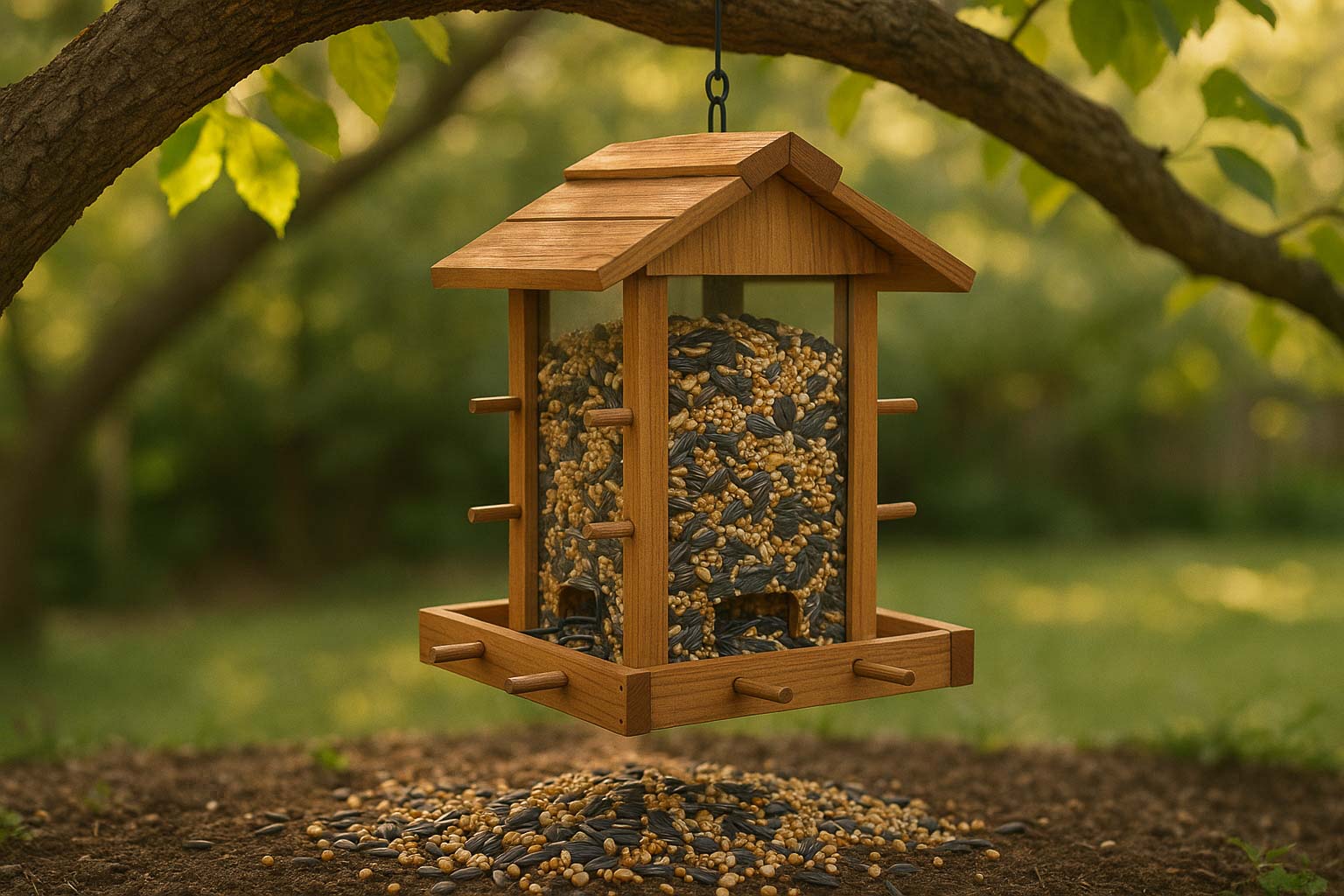The Wonder of Migration
Every fall, something incredible happens in our skies. Millions of birds take flight on journeys spanning hundreds—even thousands—of miles. From warblers and orioles to geese and hummingbirds, migration is one of nature’s greatest spectacles.
But migration is also a demanding process for birds. As temperatures drop and food sources change, wild birds need safe places to rest and reliable sources of nourishment. For backyard bird lovers, fall and winter present a unique opportunity: you can help migratory birds survive their long journeys while enjoying closer encounters right in your own yard.
What Migration Looks Like in Fall and Winter
Migration happens in waves.
- Fall Migration: In late summer and fall, birds head south in search of warmer climates and abundant food. Songbirds like warblers and thrushes move first, followed by hummingbirds, and finally waterfowl like geese and ducks.
- Winter Movement: Some birds, like juncos and certain sparrows, only arrive in your area during winter, seeking milder conditions and steady food sources.
Understanding these patterns helps you know what to expect at your feeders and how to prepare.

Which Birds to Expect in Your Backyard
Depending on where you live, you may notice different seasonal visitors:
- Eastern U.S.: American robins, cedar waxwings, dark-eyed juncos, white-throated sparrows
- Midwest: Sandhill cranes, snow geese, finches, red-breasted nuthatches
- West Coast: Rufous hummingbirds (late migration), yellow-rumped warblers, white-crowned sparrows
- South: Ruby-throated hummingbirds (headed to Central America), Baltimore orioles, swallows
Even if your yard is usually quiet, migration seasons can bring surprising new guests.
Preparing Your Feeders for Migrating Birds
1. Clean and Check Feeders
A dirty feeder can spread disease, which is especially dangerous when large flocks are passing through. Make sure to:
- Wash with warm soapy water every 1–2 weeks
- Rinse thoroughly and dry completely before refilling
- Check for damage and replace worn parts
2. Offer a Variety of Feed
Different species have different needs. During migration, provide options:
- Black-oil sunflower seed: Attracts cardinals, finches, and chickadees
- Nyjer (thistle): Loved by goldfinches and siskins
- Suet cakes: High-energy food for woodpeckers and nuthatches
- Nectar: Essential for late-migrating hummingbirds
3. Provide Fresh Water
Migrating birds need clean water for drinking and bathing. In winter, a heated birdbath can be a lifesaver.
Seasonal Food Recommendations
- Fall: Offer high-fat seeds and suet to help birds build energy reserves. Keep hummingbird nectar available longer than you think—late stragglers may pass through even after the bulk have left.
- Winter: Focus on calorie-dense foods like sunflower, peanuts, and suet. These keep birds fueled through cold nights.
Pro tip: Scatter some seed directly on the ground or low platforms for species that prefer foraging at ground level, like juncos and sparrows.

How Smart Feeders Help Track Visitors
Smart feeders add a new dimension to seasonal birdwatching:
- Real-Time Alerts: Know immediately when migratory birds stop by.
- HD Photos and Video: Capture stunning close-ups to document which species visit your yard.
- AI Identification: Instantly recognize unusual visitors without flipping through a field guide.
- Shared Experience: Share your migration sightings with friends, family, or online birding communities.
For backyard birders, a WiFi-enabled smart feeder isn’t just about convenience—it’s about deepening your connection to migration as it happens.
Community Connection Through Birding
Supporting migratory birds isn’t just good for nature—it’s good for people too. Birding builds community:
- Families can learn about migration together.
- Neighbors may notice the same seasonal patterns and share stories.
- Local bird clubs often host “migration counts,” where your sightings contribute to citizen science.
By keeping your feeders full and your yard bird-friendly, you’re part of something much bigger: a continent-wide effort to help wild birds thrive.
Tips to Go Beyond Feeders
Want to do even more? Here are extra ways to help:
- Plant native shrubs and trees for natural food and shelter.
- Leave some leaf litter for ground-foraging birds and insects.
- Turn off outdoor lights at night to reduce confusion for migrating flocks.
- Join local bird counts like Audubon’s Christmas Bird Count to track populations.
Even small steps can make a meaningful difference for birds making enormous journeys.
Make This Migration Season Count
Fall and winter migration bring drama, beauty, and a sense of awe to backyards everywhere. By preparing your feeders, offering the right food, and maybe even using a smart bird feeder to track your visitors, you can both support migratory birds and create unforgettable birdwatching moments.
Every wingbeat tells a story of resilience. By opening your backyard to migrating birds, you become part of that story—helping them along their journey while experiencing nature up close.
Get your feeder migration-ready with Trail Optics Smart Feeders. Experience the wonder of fall and winter migration right from your backyard.



Leave a comment
This site is protected by hCaptcha and the hCaptcha Privacy Policy and Terms of Service apply.